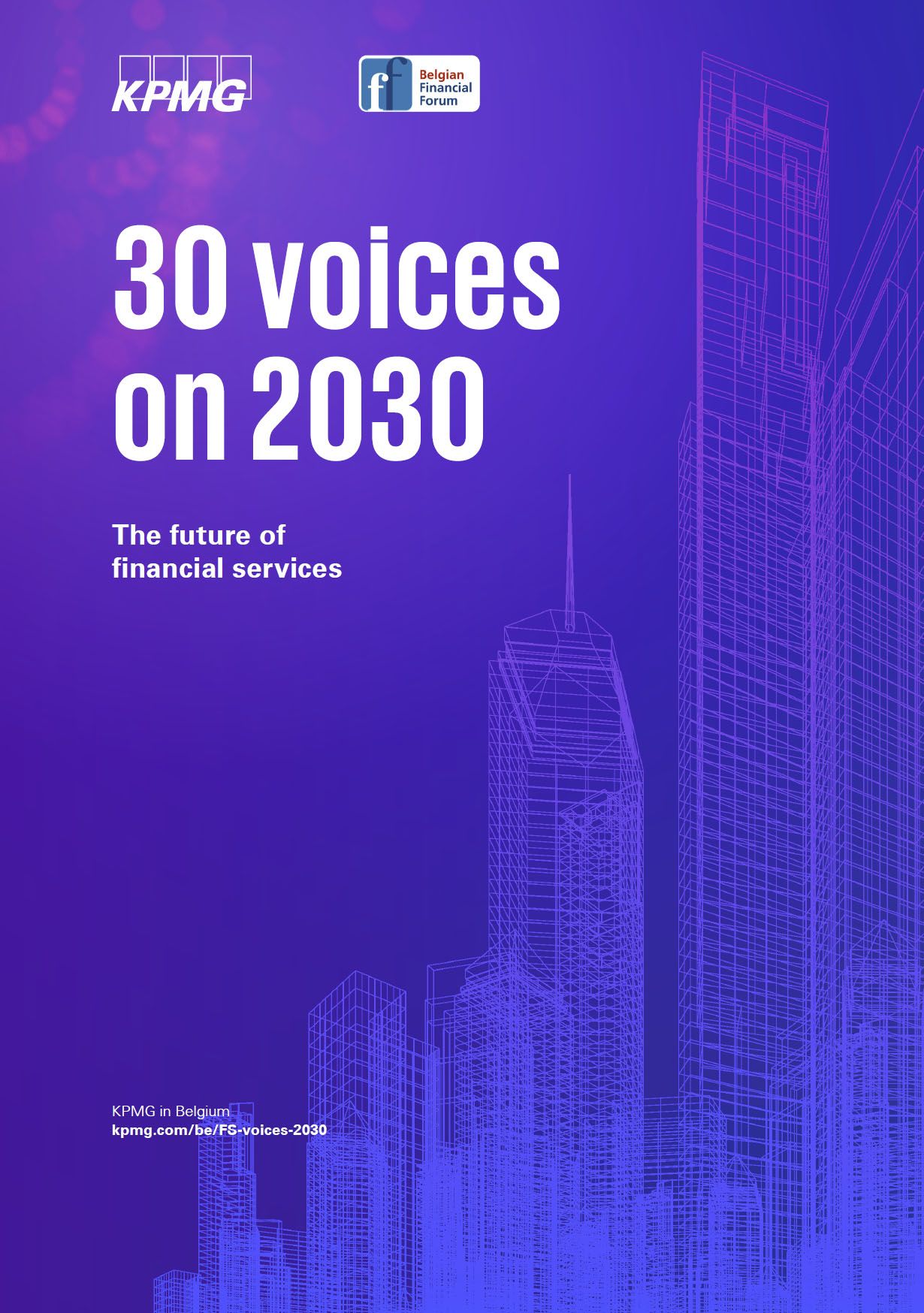In its essence, banking consists of three main pillars: borrowing, investing and payments. It is a concept that was already applied by the Babylonians 3,000 years ago and has remained the same throughout history. The banking landscape in 2030, however, looks very different from ten or twenty years ago. And that is mainly due to the influx of completely new, tech-savvy players offering banking services and the digital (r)evolution.
Of course, there are still banks in 2030. Many of the same players we know today (albeit under a different name or having been acquired or merged) and that have successfully embraced technology, tackled their legacy infrastructure, managed to finally leverage all their data and defined “purpose.” And many new players from the technology sector, like Facebook, Google, Tencent and Alibaba offer both payment services and loans. E-commerce giants, such as Walmart and Amazon, have also entered the financial services field.

Bart Vanhaeren
CEO, InvestSuite
That is a smart move, of course, because everything starts with the customer. He or she shops at, for instance, Amazon, sees a product that he wants to buy and, with one push of a button, immediately applies for a loan. Is there a bank involved? Maybe, but not necessarily or “in the back.” TikTok and Instagram obtain significant revenue from live e-commerce, which is now the norm, enabled by Shopify. Banking-as-a-Service allows those players to offer in-app core banking services like payments and loan offers.
There is also great interest in banking services from completely different sectors. One of the most popular payment services in Africa is run through telecom providers and they also offer microcredit. So, there are more and more players emerging, but the pie for banking services has also grown substantially. The unserved market of people who have no access to banking is getting smaller and smaller, especially in developing countries. Most telecom providers now offer basic banking services and some basic investment services targeted at the masses. Whenever traditional banks are absent or not offering modern, digital and cheap solutions, neobanks appear. That is their best chance for success.
Forget the voice assistants of yesteryear; they have made a giant leap forward

Platforms
From here, the step to investment services is obviously small. And that step was taken with complete conviction. Of course, a company that offers mobile phone subscriptions has no knowledge of investments, but that is no objection because embedded finance is everywhere. These players buy the complete banking platform, including robo-advice, the IT infrastructure and the underlying services and the front office from third parties, as a white label. This move towards platformization, with banking-as-a-service and investingBart Vanhaeren CEO InvestSuite 30 Voices on 2030 53 © 2022 KPMG Central Services, a Belgian Economic Interest Grouping (“ESV/GIE”) and a member firm of the KPMG global organization of independent member firms affiliated with KPMG International Limited, a private English company limited by guarantee. All rights reserved. as-a-service, is now common, everything runs via the cloud and through APIs (application programming interface). The big advantage that the newcomers have, is that they do not have to carry around legacy systems that are sometimes decades old. A bank running its own mainframes doesn’t exist anymore.
When banking and investment services become commodities, the strength of your brand and your brand experience become incredibly important. Would I dare use financial products and services from Apple? Absolutely. As a consumer, I have complete confidence in them. Would I do the same with Google? Hmmm, maybe I would, albeit with slightly less enthusiasm. Would I do that with Facebook or TikTok? I don‘t think so. Unless it’s perhaps a loan, so that the risk is mainly with them. Even more than in the past, trust has become the raison d‘être for banks. The traditional banks and some tech players are, in my opinion, better placed in that regard than the digital neobanks and the challengers.
Bye bye branch
Mind you: the classic bank branch is no sacred cow. The time when even the smallest municipality had four or five branches is over. Compared to ten years ago, there are 90 to 95 percent fewer physical branches. The location of the remaining branches is chosen very carefully, and their role has changed dramatically. They have become a kind of flagship store, which you only enter on very rare occasions, and they are mainly there to enhance the brand experience.
For everything else, virtually all communication with your bank takes place via digital channels. This digitalization is therefore an absolute necessity for survival. This also applies to private banks. There too, the threshold for encountering a human being has been raised. They are only available for very large assets, or for example when you need tax advice or to arrange your inheritance. And even for those very large assets, the digital component plays a major role.
Metaverse
When the communication with your client is almost purely digital, it must, of course, be of extremely high quality. We have reached a point where AI and algorithms have become so good that banks can offer truly hyperpersonalized services, information and news, for example, through chatbots. Forget the voice assistants of yesteryear; they have made a giant leap forward in the meantime. If we go a step further, we end up in the metaverse. There are still technical hurdles, but the direction is clear: it is coming. Clients will be able to invest, buy cryptocurrencies or buy virtual real estate in the metaverse, exactly as in the real world.
Of course, this digital revolution has had an impact on the recruitment policies of financial institutions. In the past, they were mainly looking for economists. Today, app developers, AI specialists and data scientist are the most sought-after profiles. And that is a challenge, because the top performers in those categories usually do not choose banks when they look for an employer. Even psychologists are now in high demand, as we move more and more towards „purpose banks,“ banks that are fully geared towards your ethics and lifestyle. Their investment strategy, profit allocation and operations are fully tailored to their customers’ way of living and thinking patterns.
About the interviewee
After getting his two Master’s Degrees at KU Leuven Bart Vanhaeren started his career at Arthur D. Little and GE Capital, before joining KBC in 1999. In 2013 he became CEO of Bolero, KBC’s online investment platform, which he rebuilt and relaunched. While at KBC he also founded Bolero Crowdfunding. Five years later he left the bank and founded InvestSuite, a fintech that offers banks, brokers and wealth managers a suite of digital investment solutions.

30 Voices on 2030: The new reality for financial services
Discover more perspectives from 30 Voices representing the multi-faceted financial services industry.
Download full report ⤓





